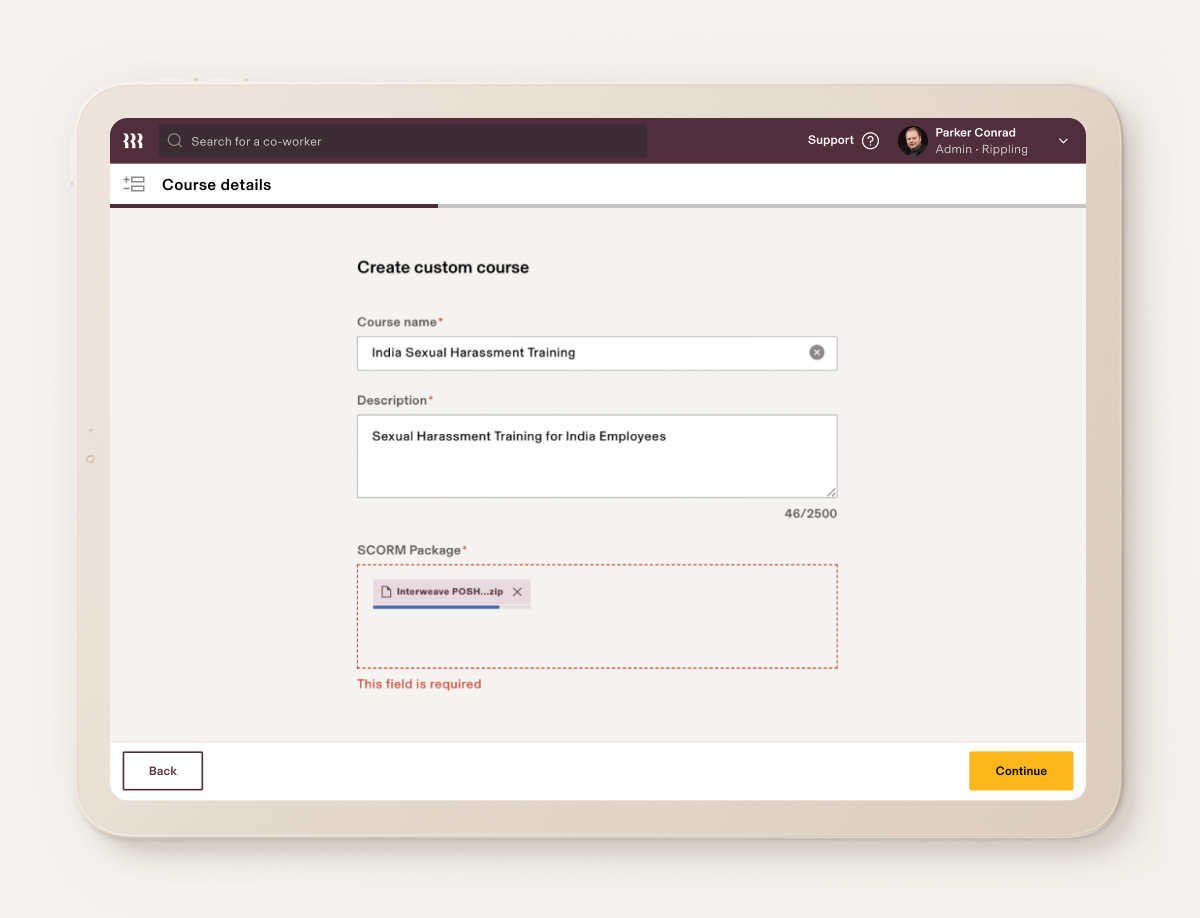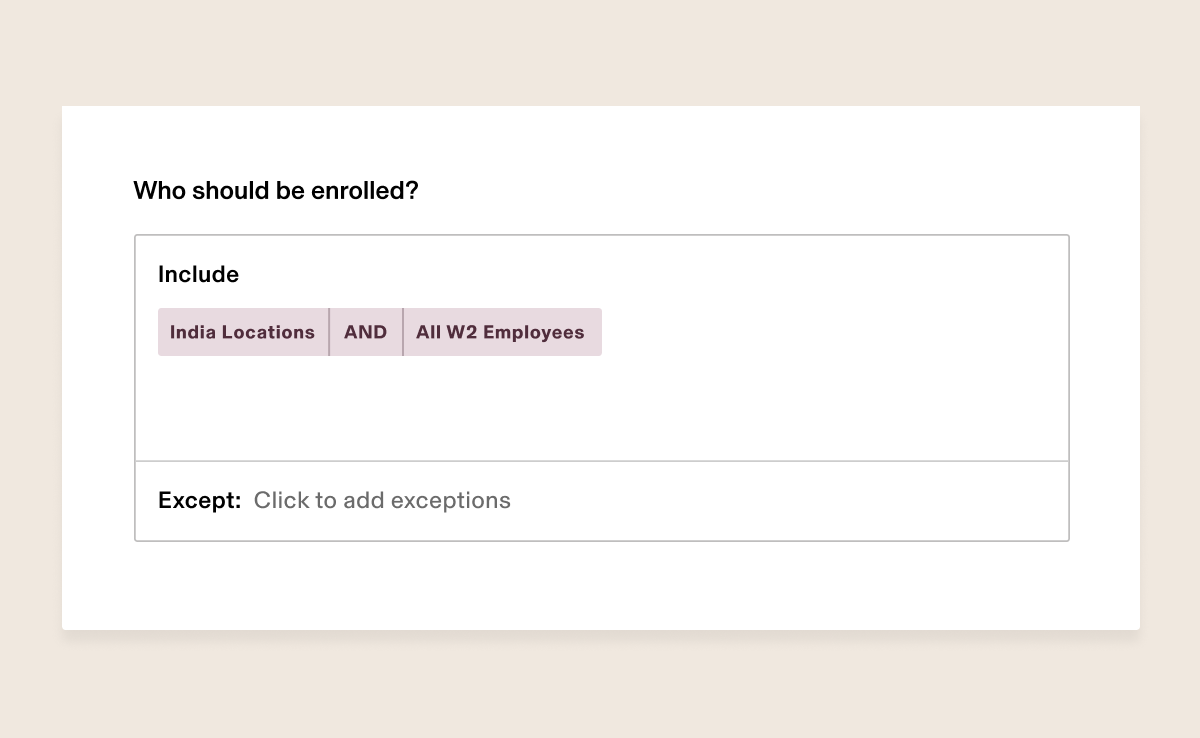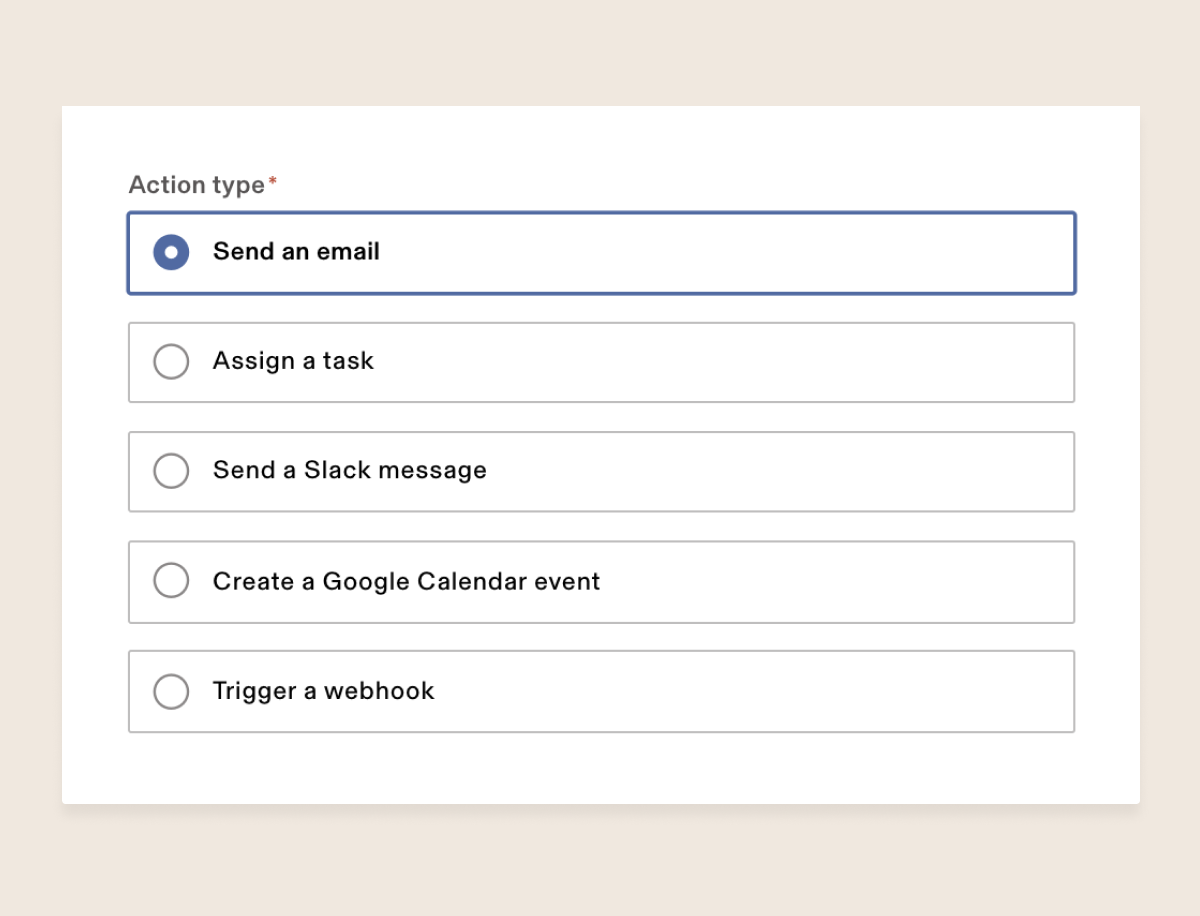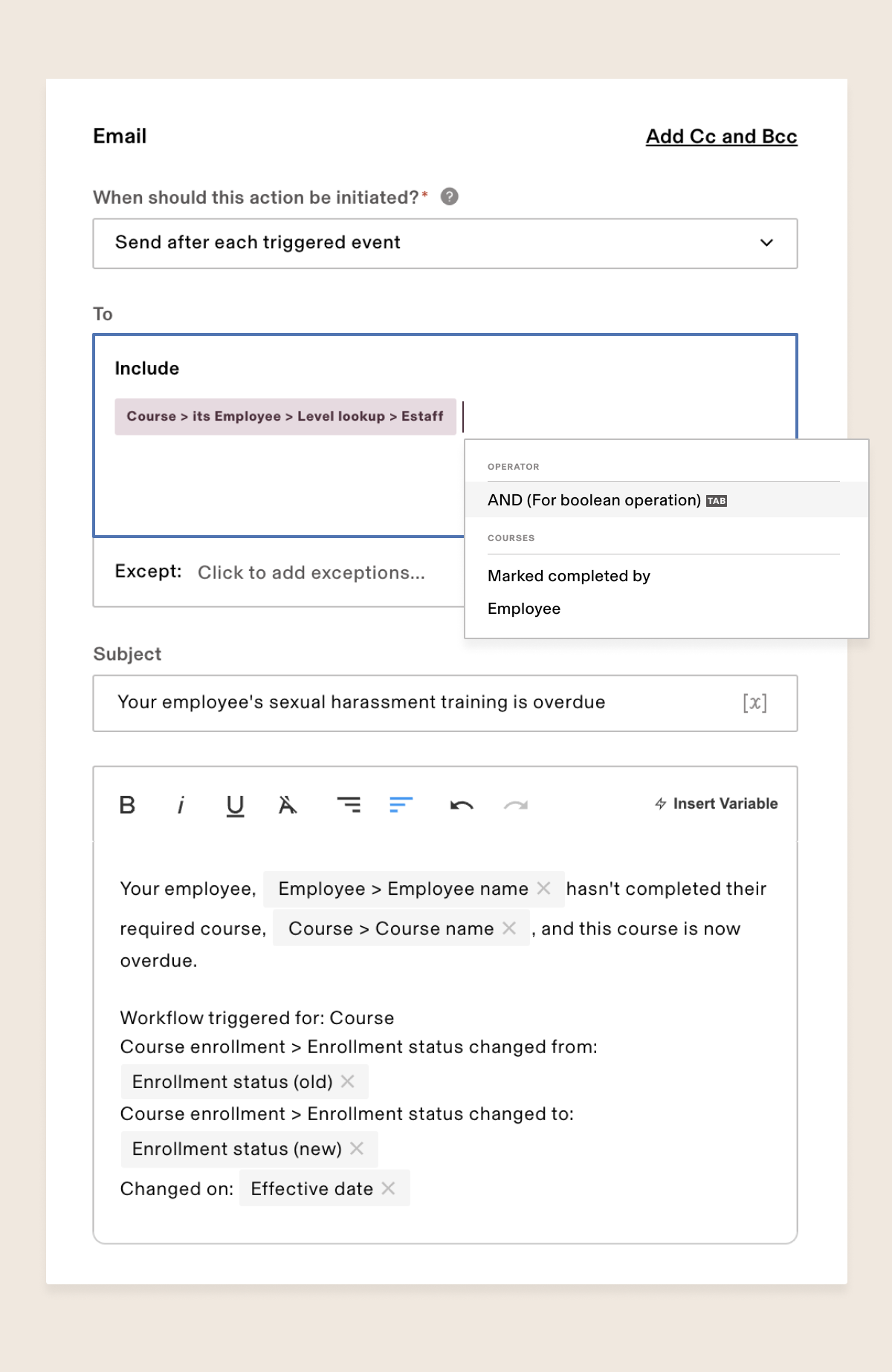How we implemented a sexual harassment prevention training program in less than 15 minutes

As Rippling’s VP of People, I oversee a distributed workforce that grew 3x last year, and will double again this year. Needless to say there are a lot of moving parts, including ensuring our compliance with complex global workplace regulations. In this post, I’ll show you how we recently rolled out a sexual harassment prevention training course to all of our employees in India in just a few minutes.
After identifying and purchasing quality content that complies with India’s POSH Act against sexual harassment in the workplace, I was ready to enroll employees in the training. I needed help, however, from our CEO Parker Conrad, because he is one of the only full admins of Rippling the software for Rippling the company. So I sent him an email.

Parker runs payroll for our entire company, and manages benefits, systems access and single sign-on, employee laptop security policies, email lists, and more. It’s not traditionally part of a CEO’s job, but he often tells us that he considers it the most important part of his job at Rippling because it means he shares the same experience using our product that customers do. Implementing an important training course is no exception; if our CEO can do it with minimal disruption to his busy schedule, we know our customers can as well.
How we launched a new compliance training program in minutes (and you can too)
Our LMS solution, Rippling Learning Management, comes with about two dozen standard courses for free (including sexual harassment prevention training for US employees) and access to a much larger library of content through our partner, Go1. But, we also let you upload content you’ve created yourself or purchased from another third party, if it’s formatted as a SCORM file (a common format for e-learning content).
The process that Parker used to fully implement the course is the same one that any Rippling customer would use for their own employee training. In this case, he had to download the course from the OneDrive link that I sent him. It was the holidays, so waiting for the file to download (and then re-uploading into Rippling) on his parents’ mediocre internet connection would take more time than every other step of this process put together.
From Rippling’s LMS module, he clicks “Create a new course,” chooses to upload a custom course, chooses the file from his computer, and then waits for it to upload:

Next, he needed to tell Rippling which employees should be enrolled in this course.
This is where Rippling really shines—in other systems, he’d have to construct a spreadsheet with a list of individuals to be enrolled in the course, along with their email addresses, and he’d have to remember to add new employees whenever they joined the company.
But Supergroups in Rippling let him tell Rippling exactly who should take this course—in this case, everyone that is an employee (contractors are not required to take this course) whose work location’s country is ‘India.’ Supergroups let a Rippling admin write really any conceivable logical statement for which employees should get access to a business system, be added to an email list or Slack channel, have a certain policy applied to them, or, in this case, be enrolled in a sexual harassment prevention training course:

This rule is evergreen—when we hire new employees in India, they’ll be enrolled in this course automatically, because they meet the rule. If an employee relocates to India from another country, it will enroll them automatically. And, because it’s coded off the work location’s country—rather than being specific to our office in Bangalore—if we open a new office in Mumbai, we won’t need to change this rule at all; those employees will be enrolled as well.
Next, he specifies that everyone should be enrolled on January 1, they have 30 days to complete the course, and they need to repeat the course annually. Any new hires going forward will have 30 days from their hire date to complete the course.

He hits “Continue” and….. he’s done. That’s it.
Meanwhile, Rippling has queued up 336 people to be enrolled in this training on January 1, and he can click on the “preview” link to see the course in action—i.e. what our employees are going to see.

How we automated the ongoing administration work
How we automated the ongoing administration work
In the background, there’s a lot of other stuff that Rippling is handling automatically:
First, Rippling is going to invite employees to take the course as soon as enrollment opens up on January 1. It will send reminders. Eventually, it will escalate with reminders to their managers. While an admin can configure these reminders, they don’t have to set anything up—Rippling does this automatically.
Second, once employees are enrolled, Rippling will track their progress. Here’s what this looks like for our sexual harassment prevention training course for California-based employees—which is required for any California-based employee, whether they are directly affiliated with our California office, or are a “remote” employee that happens to be living and working in California:

Third, Rippling automatically handles permissions within the LMS going forward—so any manager in the company can see this same dashboard at any time to see which of the employees that report up to them have completed training, are overdue, etc. You can set up this visibility in other systems—but those systems don’t know which employees report to which managers, so those systems can’t get these permissions right automatically, without you having to specify who should have access to whom.
Lastly, because all the data about our employees’ course enrollments and completion is stored in Rippling’s employee graph, Parker or another admin can build custom reports and workflows around this enrollment. For example, they can create a custom alert to go to the E-staff member above an employee if their training is overdue:




With very little work on the Rippling admin’s part, our employees in India were enrolled in this important learning course, and will be automatically going forward.





